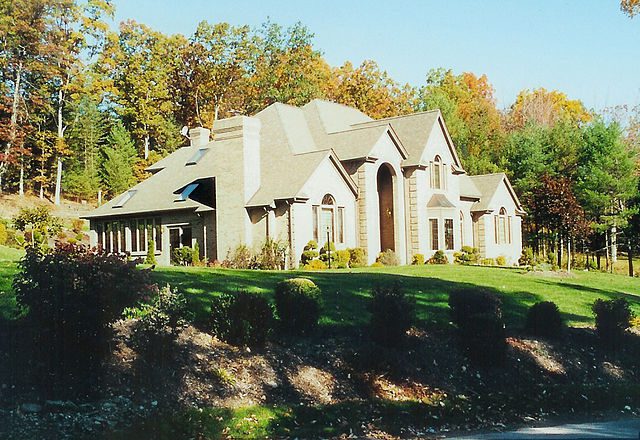A Wartime Memoir Revisited, Southern Irish Protestants Remembered, and the 2008 Universal Fire

Patrick French revisits Eric Newby’s wartime memoir, Love and War in the Apennines: “An escaped British prisoner-of-war is sleeping in a grassy hollow by the edge of a cliff. He wakes to find a German soldier standing over him, wearing summer battledress, a pistol at his hip. Realizing he has been caught, he says his name and adds, ‘I’m a lieutenant in the infantry, or rather I was until I was put in the bag.’ In the bag – captured. It is one of the many phrases of the time that add to the resonance of Love and War in the Apennines (1971), a vivid memoir of Eric Newby’s capture, escape and recapture in Italy’s mountainous terrain during the later years of World War Two. The man standing over him will not, though, take him away. Oberleutnant Frick is an education officer who instead proffers a bottle of beer and talks of his love of butterflies, which he has come to collect in the hills, armed with a net. He says his day job is to give lectures on Italian Renaissance culture ‘to groups of officers and any of the men who are interested. It is scarcely arduous because so few of them are.’”
A new collection of essays tells the story of Southern Irish Protestants: “Small in number and almost pathologically self-effacing, the lives of Southern Irish Protestants, beyond the Big House caricature, are almost invisible to external observers. This book sets out to reveal something of them. The phrase in my family, for the Methodist community from which we come in West Cork, is ‘thin on the ground, but hard to kill’. Sadly, some of the more empirically-minded among the members of the ‘Old’ IRA put the proposition to the test in 1922.”
Breaking: Big homes don’t make you happy. Of course, they don’t make you unhappy either. For that, my friend, you’ve only yerself to blame.
The man who turned the British bookseller Waterstones around will lead the effort to do the same at Barnes and Noble: “Daunt appears ready for the responsibility. In an interview with PW, he said that when he assumed the role of managing director at Waterstones in 2011, the situation there was much worse than at present at Barnes & Noble. ‘At the very least, B&N is profitable,’ he said, ‘but I may be stating the bleeding obvious that if sales aren’t turned around, there are going to be some adverse consequences—closing a lot of shops or, worse, closing all the shops.’”
Jake Shafer: Newspapers don’t need and shouldn’t ask for “a special law to help it compete with Google and Facebook.”
While scholars debate the authenticity of Salvator Mundi, it’s chillin’ on the yacht Serene.
Essay of the Day:
In The New York Times Magazine, Jody Rosen writes about the “biggest disaster in the history of the music business”—the 2008 Universal fire:
“The fire that swept across the backlot of Universal Studios Hollywood on Sunday, June 1, 2008, began early that morning, in New England. At 4:43 a.m., a security guard at the movie studio and theme park saw flames rising from a rooftop on the set known as New England Street, a stretch of quaint Colonial-style buildings where small-town scenes were filmed for motion pictures and television shows. That night, maintenance workers had repaired the roof of a building on the set, using blowtorches to heat asphalt shingles. They finished the job at 3 a.m. and, following protocol, kept watch over the site for another hour to ensure that the shingles had cooled. But the roof remained hot, and some 40 minutes after the workers left, one of the hot spots flared up.
“The fire moved quickly. It engulfed the backlot’s famous New York City streetscape. It burned two sides of Courthouse Square, a set featured in ‘Back to the Future.’ It spread south to a cavernous shed housing the King Kong Encounter, an animatronic attraction for theme-park visitors. Hundreds of firefighters responded, including Universal Studios’ on-site brigade. But the fire crews were hindered by low water pressure and damaged sprinkler systems and by intense radiant heat gusting between combustible structures.
“Eventually the flames reached a 22,320-square-foot warehouse that sat near the King Kong Encounter. The warehouse was nondescript, a hulking edifice of corrugated metal, but it was one of the most important buildings on the 400-acre lot. Its official name was Building 6197. To backlot workers, it was known as the video vault.
“Shortly after the fire broke out, a 50-year-old man named Randy Aronson was awakened by a ringing phone at his home in Canyon Country, Calif., about 30 miles north of Universal City, the unincorporated area of the San Fernando Valley where the studio sits. Aronson had worked on the Universal lot for 25 years. His title was senior director of vault operations at Universal Music Group (UMG). In practice, this meant he spent his days overseeing an archive housed in the video vault. The term “video vault” was in fact a misnomer, or a partial misnomer. About two-thirds of the building was used to store videotapes and film reels, a library controlled by Universal Studios’s parent company, NBCUniversal. But Aronson’s domain was a separate space, a fenced-off area of 2,400 square feet in the southwest corner of the building, lined with 18-foot-high storage shelves. It was a sound-recordings library, the repository of some of the most historically significant material owned by UMG, the world’s largest record company.”
Photos: Madonna della Corona Sanctuary
Receive Prufrock in your inbox every weekday morning. Subscribe here.
Comments